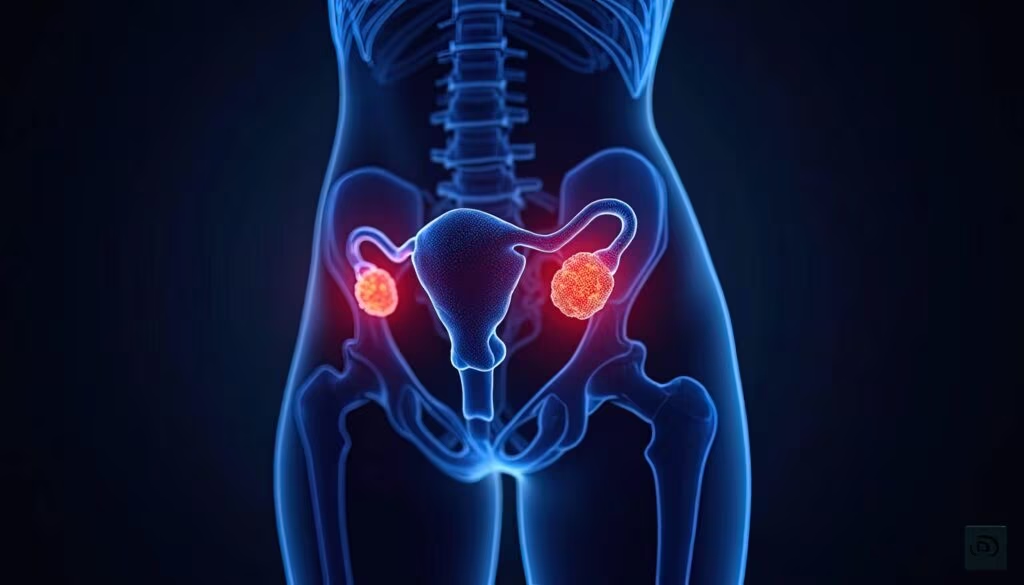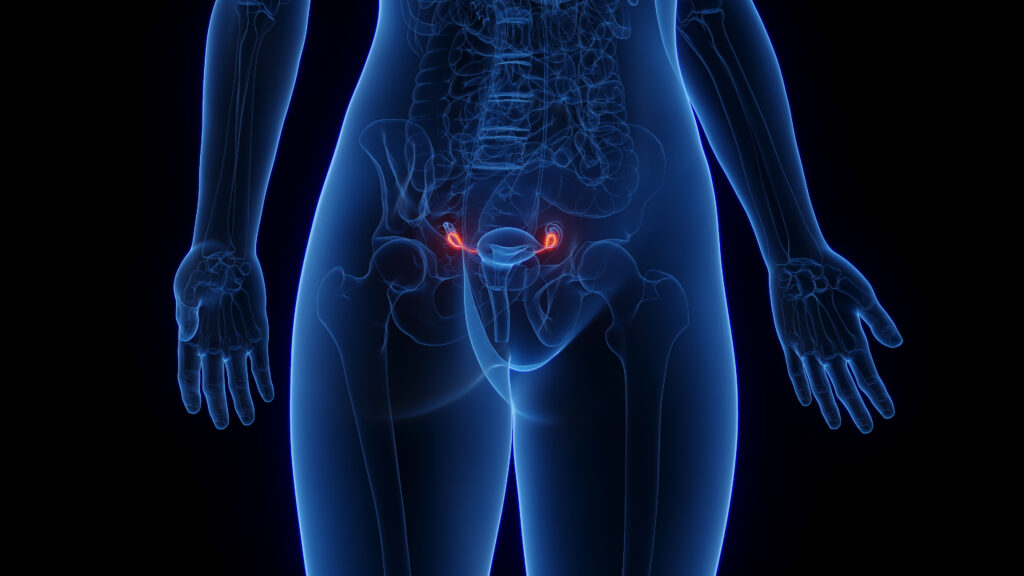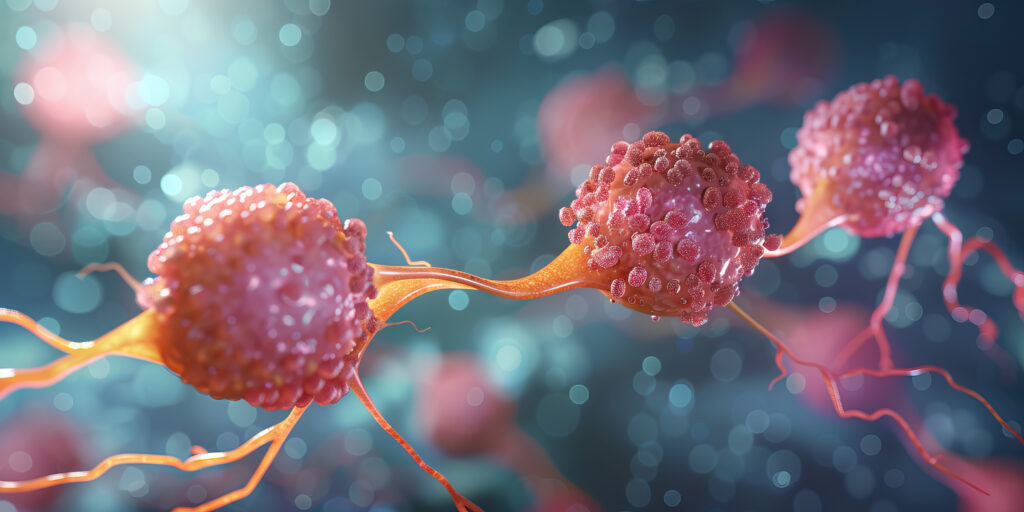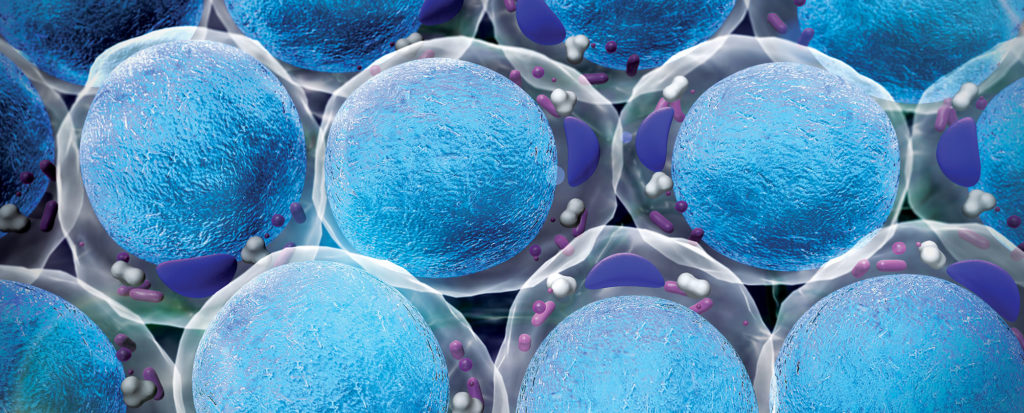A convergence of societal change and new reproductive technologies has created a critical need for biomarkers that can accurately predict the duration of a young woman’s remaining fertile years. In essence, a robust marker is needed that can accurately define what might be termed ‘a woman’s functional ovarian age.’ If a woman aged 25 years has a functional ovarian age equivalent to a woman aged 45 years, she can expect to have problems with fertility.
A convergence of societal change and new reproductive technologies has created a critical need for biomarkers that can accurately predict the duration of a young woman’s remaining fertile years. In essence, a robust marker is needed that can accurately define what might be termed ‘a woman’s functional ovarian age.’ If a woman aged 25 years has a functional ovarian age equivalent to a woman aged 45 years, she can expect to have problems with fertility.
The introduction in the 1960s of reliable and well-tolerated forms of contraception provided a means to permit women to effectively delay childbearing. Data from The Netherlands, for example, show that the mean age at which women deliver their first child rose from 24.6 years in 1970 to 29.1 years in 1999. At present, in completing their families, women in The Netherlands deliver more children after the age of 30 than before.1 Similar patterns are present in most Western societies. These trends have led to a higher prevalence of women experiencing infertility after the age of 35 years, a time when standard interventions have lower success rates.2
Can Fertility in Women Be Effectively Extended?
The growing availability of assisted reproductive technology, combined with the demonstrated effectiveness of modern contraceptive methods, “have given the impression that female fertility can be manipulated according to wish, and at any stage of life.”1 This impression is not fully justified. It is true that methods to delay conception are highly effective. However, reliable methods with regard to preserving fertility into later years are still in the developmental stages. The use of oocyte donors now permits a woman to extend her fertility into later years, although a limitation to this approach is that it does not permit the woman to deliver a child with her own genetic characteristics. Ongoing research into oocyte cryopreservation techniques holds promise as a means by which a woman could extend her fertility into later years using her own oocytes, and thus her own DNA.3,4
New Techniques, New Tools, New Challenges
As the technique of oocyte cryopreservation becomes more reliable and works its way into standard clinical practice, new challenges will present themselves. Which women should undergo cryopreservation of oocytes, and at what age should the oocytes be harvested? These questions create a critical need for biomarkers that can accurately predict the duration of a young woman’s remaining fertile years. There is need for a tool that can accurately define a woman’s functional ovarian age.
The age-related decline in ovarian function and fertility that occurs in women is highly variable and individualized.1 The normal age of natural menopause ranges from 40 to 60 years.5,6 Further complicating the issue, some women will unexpectedly develop a pathological condition that has been termed ‘premature menopause’ at a very young age, sometimes even during adolescence. Once this condition develops in a young woman, it is too late to preserve oocytes. Greater insight into the physiology of the normal ovarian aging process might provide a basis from which to more accurately assess ovarian endocrine and fertility function in an individual young woman.7–10 Standard endocrine measures of ovarian follicle function remain remarkably normal in older women who are still experiencing regular menstrual cycles.9,14
A major challenge in developing a test that can accurately predict a functional ovarian age in young women is the inherent variability in the system. While the mean age of menopause is 50–51 years, there is tremendous variation in normal from 40 to 60 years.5,15 Thus, at one extreme an individual, normal 30-year-old woman might have an ovarian follicle pool size adequate to function for only another 10 years, or at the other extreme, possibly for as much as another 30 years. Large overlaps between ovarian function markers of older and younger women limit their value in defining a functional ovarian age for an individual woman.1,10
The ideal test to detect asymptomatic ‘primary ovarian insufficiency’ in young women should be accurate enough to define the number of years until menopause will occur, and be shown to have better predictive value than chronological age itself. At present no gold standard exists for determining functional ovarian age.16,17 There is no evidence that any currently available putative measure of remaining ovarian function and fertility has better predictive value than chronological age itself.
Primary Ovarian Insufficiency—A Continuum of Impaired Fertility
‘Premature ovarian failure’—also known as ‘premature menopause’— has been defined as the development of hypergonadotropic hypogonadism before the age of 40 years, which is two standard deviations below the mean age of natural menopause.5,18,19 This condition is associated with amenorrhea, symptoms of estrogen deficiency, such as hot flashes and vaginal dryness, and high serum gonadotropin levels (follicle-stimulating hormone (FSH) and luteinizing hormone (LH)). The incidence is approximately one in 250 by the age of 35 years and one in 100 by the age of 40 years.20
In reality, the terms ‘premature ovarian failure’ and ‘premature menopause’ are problematic because they imply the permanent cessation of ovarian function. In fact, many women with this condition experience intermittent ovarian function that may last for decades after the diagnosis. Pregnancy may also occur in some women many years after the diagnosis.21 The preferred term for the condition is ‘primary ovarian insufficiency’ (POI), as first introduced by Fuller Albright in 1942.22
In fact, the clinical situation is much more complex than it appears on the surface. It is now apparent that there is a continuum of altered ovarian function that relates to a decline in ovarian function. In some cases, impaired ovarian responsiveness is not detectable until a woman undergoes ovarian stimulation with gonadotropins as a treatment for infertility. Women who respond poorly to gonadotropin stimulation as part of assisted reproduction treatments experience an earlier menopause and exhibit menstrual cycle characteristics suggestive of ovarian aging.11,23—26 Thus, a significant proportion of asymptomatic women experiencing regular menses may be at risk of early-onset subfertility, representing a clinical continuum that is also best termed POI.22,27,28 A corollary is the perspective that it is not the chronological age of a woman that determines her reproductive age, but rather the period of time that must elapse before menopause occurs.1
The term POI deserves some explanation. The ‘primary’ part of the term refers to the fact that it is the ovary that fails to respond adequately to stimulation. ‘Secondary’ ovarian insufficiency would mean that the pituitary is providing inadequate stimulation to the ovary. The fact that administration of exogenous gonadotropins fails to stimulate the ovary adequately is prima facia evidence that the impaired response is due to some abnormality in ovarian function. The term ‘insufficiency’ refers to the fact that ovarian responsiveness remains, although below normal.
The term POI may be preceded by descriptors that identify the severity of the altered ovarian function. A convention was developed by a multidisciplinary meeting sponsored by the National Institutes of Health (NIH) and the American Society for Reproductive Medicine (ASRM).29 These terminologies define the continuum of clinical states that comprise the spectrum of POI (see Table 1). Occult POI becomes evident only after a woman has had a low response to a therapeutic use of gonadotropin stimulation. Biochemical POI is currently detected by the presence of an elevated serum FSH level above the normal range for a young woman. Overt POI refers to the fact that menses are no longer regular as a result of impaired ovarian function, evidenced by an above normal serum FSH level.
Mechanisms of Primary Ovarian Insufficiency
In only approximately 10% of cases is it possible to define the etiological mechanism causing overt POI. Currently, the only clinically indicated laboratory tests to determine etiology are:
- a karyotype to test for a missing or abnormal X chromosome;
- an examination of the FMR1 gene to determine whether the woman is a pre-mutation carrier; and
- a serum test to detect the presence of adrenal auto-antibodies as a marker for the presence of autoimmune oophoritis.21,30,31
In 90% of cases the results of these three tests will be normal and the mechanism of the POI will remain a mystery. Thus, there is tremendous opportunity for identifying and developing marketable biomarkers that relate to ovarian function.
In Search of Biomarkers
The NIH, located in Bethesda, Maryland, US, has initiated an NIH Program on Public–Private Partnerships whose mission is to facilitate collaborations to improve public health through biomedical research. As NIH’s central resource on public–private partnerships, the program provides guidance and advice to the NIH and potential partners on the formation of partnerships that leverage NIH and non-NIH resources. The Biomarkers Consortium, launched in October 2006, is a public–private partnership including the NIH; the US Food and Drug Administration (FDA); the Centers for Medicare and Medicaid Services; the pharmaceutical, biotechnology, diagnostics, and medical device industries; non-profit organizations and associations; and advocacy groups. The consortium is managed by the Foundation for the NIH (FNIH).
The NIH Biomarkers Consortium will search for and validate new biological markers—biomarkers—in order to accelerate the delivery of successful new technologies, medicines, and therapies for prevention, early detection, diagnosis, and treatment of disease. Biomarkers are objective measures of risk, disease status, and/or health outcomes and include, for example, cholesterol and blood pressure as well as known biomarkers of cardiovascular (CV) health. The Biomarker Consortium structure will accommodate a number of discrete projects, each devoted to biomarker discovery, qualification, or use in targeted areas of disease-related biomedical and clinical science, with the ultimate aim of improving public health. Projects will be proposed by members of the consortium, academics, patient advocates, and the public, and will be developed and implemented according to their scientific merit, public health need and opportunity, and availability of support and funding. For more information see http://ppp.od.nih.gov
In Search of Autoimmune Biomarkers for Primary Ovarian Insufficiency
Autoimmunity is a well-established mechanism of endocrine organ dysfunction. For example, the detection of serum auto-antibodies against human recombinant thyroid peroxidise is highly sensitive and specific in predicting the presence of histological evidence for autoimmune thyroiditis.32 At present, there are no assays of ovarian autoimmunity that have achieved FDA approval as clinically indicated in vitro diagnostic tests. Circumstantial evidence suggests that a significant portion of POI may be due to ovarian autoimmunity, but the validated tools to detect this process are lacking.33,34
The author’s laboratory has been investigating a mouse model of autoimmune POI that is induced by neonatal thymectomy. Using immune sera from these mice that reacted specifically with oocyte cytoplasm, it screened an ovarian cDNA expression library and cloned a novel gene.35 The gene was named Mater, because knock-out experiments demonstrated that it plays a critical role in female reproduction, and in fact functions as a maternal effect gene.36 The gene’s organization was determined and found a human homolog of mouse Mater.37,38
There is unpublished evidence that some women with POI indeed have evidence of Mater autoimmunity against human recombinant Mater. Partners are currently being sought from industry to develop this intellectual property (IP) into an FDA-approved kit with a clinical indication to detect ovarian autoimmunity. There is a real possibility that women who are destined to develop autoimmune POI have circulating anti-Mater antibodies long before they develop clinically significant autoimmune POI. This would be similar to the situation with antithyroid peroxidise antibodies and hypothyroidism. If this is true, one would expect that anti-Mater antibodies could be a useful biomarker with which to identify women at risk of a shortened reproductive lifespan. Such women may benefit from oocyte cryopreservation prior to the development of ovarian insufficiency.
In Search of Genetic Biomarkers for Primary Ovarian Insufficiency
Evidence suggests that the etiology of POI has a substantial genetic component.39 Despite this, the FMR1 gene is the only gene that has demonstrated clinical relevance, in that there is an indication for clinical genetic testing in POI. From that perspective the FMR1 gene serves as a paradigm for the reproductive genetics associated with POI. However, only a small fraction of women with POI are found to have a pre-mutation in the FMR1 gene.
Presumably there are other genes yet to be identified that can serve as biomarkers for ovarian function. There is strong evidence that the altered ovarian function associated with FMR1 pre-mutation carrier status represents a continuum. Welt et al. have provided evidence for occult POI in pre-mutation carriers who are experiencing normal regular menses.40 They found that FSH was elevated across the follicular and luteal phases in fragile X pre-mutation carriers compared with age-matched controls. There is also evidence that pre-mutation carriers respond poorly to gonadotropin stimulation as part of efforts for pre-implantation genetic diagnosis.41 These findings suggest that there may be an increased prevalence of the FMR1 pre-mutation in women who present with regular menses and yet have infertility along with elevated baseline FSH levels and/or a low response to gonadotropin stimulation. This is what is preferably called ‘occult POI.’ The implication is that there are similar genes yet to be identified that are more commonly associated with an early decline in ovarian function.
Genome-wide association studies hold great promise as a method by which to define biomarkers that can predict an early decline in ovarian function. A genome-wide association study is an approach that involves rapidly scanning markers across the complete sets of DNA, or genomes, of many people to find genetic variations associated with a particular disease. Once new genetic associations are identified, researchers can use the information to develop better strategies to detect, treat, and prevent the disease. Such studies are particularly useful in finding genetic variations that contribute to common, complex diseases, such as asthma, cancer, diabetes, heart disease, and mental illnesses.
Whole genome information, when combined with clinical and other phenotype data, offers the potential for increased understanding of basic biological processes affecting human health, improvement in the prediction of disease and patient care, and ultimately the realization of the promise of personalized medicine. In addition, rapid advances in understanding the patterns of human genetic variation and maturing high-throughput, cost-effective methods for genotyping are providing powerful research tools for identifying genetic variants that contribute to health and disease.
The spectrum of POI is a disorder that should be amenable to this scientific approach. The author’s group is in the process of developing a POI consortium through which samples will be acquired for this purpose. On October 28, 2007, the NIH released a new policy on Genome Wide Association Studies that applies to any such studies initiated after January 25, 2008. The policy fosters data-sharing while protecting research participants’ and researchers’ rights to publish and maintain IP. The policy creates a centralized NIH Genome Wide Association Study data repository. Researchers who share will have access to other researchers’ data for their own research. The direct link to the policy can be found at http://grants.nih.gov/grants/guide/notice-files/NOT-OD-07-088.html
Conclusions
Social trends in delayed childbearing combined with advances in reproductive technology that extend fertility in women are working together to create a huge market opportunity. There is a critical need for validated markers that can inform young women of their functional ovarian age. A research consortium of diverse expertise with a mission of uncovering the autoimmune and genetic mechanisms of POI would likely provide the most direct path to such markers.■












